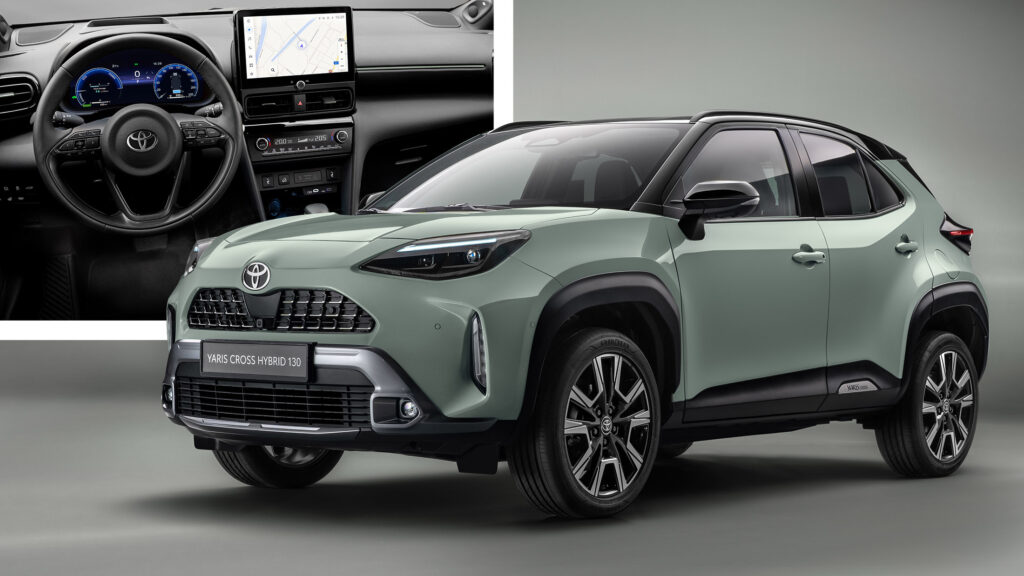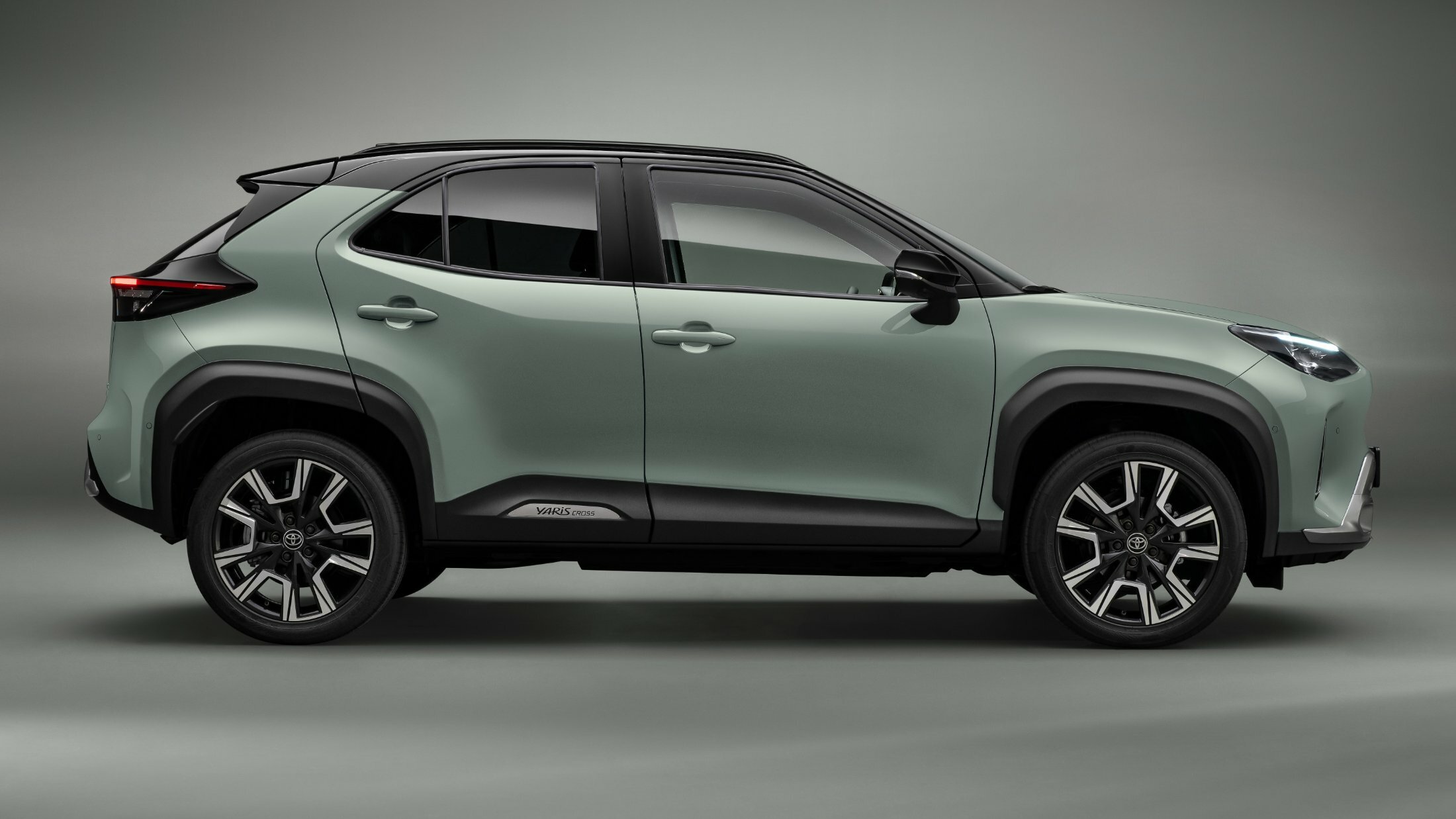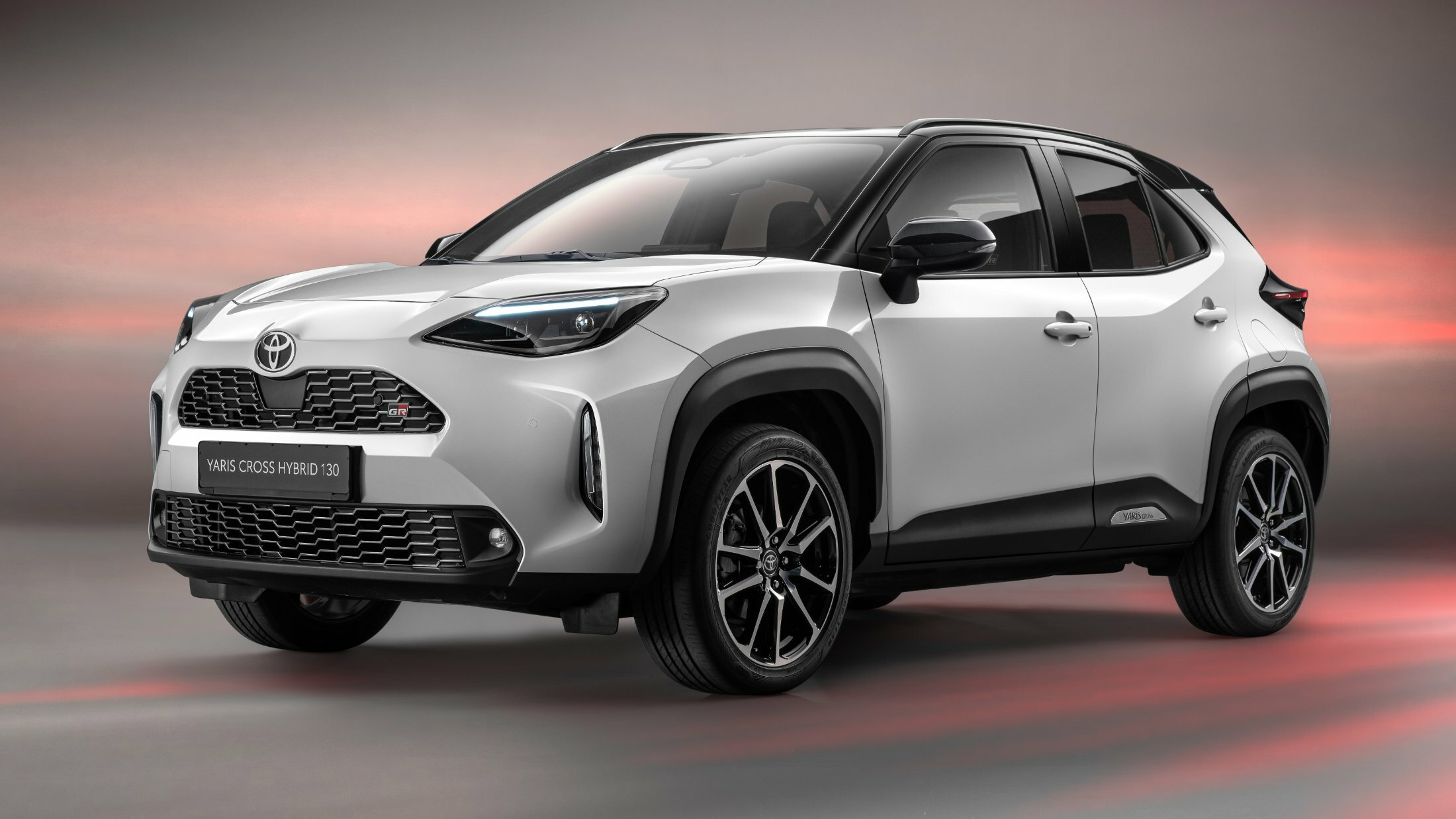Toyota announced a series of updates for the Yaris Cross in Europe, following the facelift of the mechanically-related Yaris supermini. The subcompact crossover is now available with a more powerful hybrid powertrain, while benefiting from more tech inside the cabin, better insulation, and improved safety equipment.
Starting with the new powertrain option, the Hybrid 130 pairs the naturally aspirated 1.5-liter engine with a more potent electric motor, yielding a combined output of 130 hp (97 kW / 132 PS) and 185 Nm (136.5 lb-ft) of torque. The power boost improves the 0-100 km/h (0-62mph) acceleration which is now completed in 10.7 seconds (an improvement of 0.4 seconds). At the same time, the B-segment crossover maintains its segment-leading position in terms of CO2 emissions, averaging between 103 and 122 g/km.
The less potent Hybrid 115 option remains available with 114 hp (85 kW / 116 PS) and 141 Nm (104 lb-ft) of torque. Toyota claims that the self-charging hybrid technology is the “number one deciding factor” for Yaris Cross buyers, which is why it doesn’t offer ICE-only versions of the B-SUV in Europe.
More: New Toyota Yaris Cross Debuts In Indonesia, Looks Like A Mini Highlander
Toyota Yaris Cross Premiere Edition
Externally, the refreshed model retains the appearance of its predecessor, with the addition of a new Juniper Blue color option to the palette. The top-tier Premiere Edition trim stands out with its exclusive Urban Khaki hue, complemented by matching interior accents and a fresh set of 18-inch alloy wheels. Both the Premiere Edition and GR Sport trims leverage the enhanced hybrid powertrain, with the latter featuring a sportier chassis setup courtesy of Gazoo Racing.
In the interior, the standout feature is the upgraded technology that brings it in line with competitors. Depending on the trim level, there’s a choice between a 7-inch or 12.3-inch digital instrument cluster, complemented by either a 9-inch or 10.4-inch infotainment touchscreen. The Toyota Smart Connect multimedia system has received enhancements, now supporting over-the-air updates and wireless Android Auto and Apple CarPlay connectivity.
Following the Yaris hatchback, the Yaris Cross now offers a Smart Digital Key with added remote control capabilities. Additionally, all grades feature refreshed upholstery patterns and a more cushioned lower instrument panel cover.
Toyota engineers prioritized minimizing noise and vibration to enhance the overall comfort of Yaris Cross occupants. In particular, they added a dynamic damper on the left-side engine mount, a resonator on the intake hose, triple-layer insulation placed behind the dashboard, and an additional layer of felt on the cowl top silencer. Furthermore, thicker glass for the windscreen and side windows was employed to further attenuate unwanted sounds and vibrations.
Last but not least, the Toyota T-Mate safety kit that is standard across the Yaris Cross lineup has also been enhanced with new and improved features. Hardware is upgraded with a new camera and radar scanning further and wider than before. New additions in the ADAS suite include the Pre-Collision System, Acceleration Suppression, Proactive Driving Assist, Safe Exit Assist, and Rear Seat Reminder System, while the Adaptive Cruise Control is smoother and quicker than before.
Online reservations for the updated Toyota Yaris Cross are set to kick off later this month in specific European markets. Detailed pricing information will be disclosed as the market launch approaches. Notable competitors within the densely populated and fiercely competitive B-SUV segment include the Peugeot 2008, Ford Puma, VW T-Cross, Renault Captur, Skoda Kamiq, and others. It’s worth noting that the Toyota Yaris Cross also welcomed a more upscale counterpart in the form of the Lexus LBX.
































